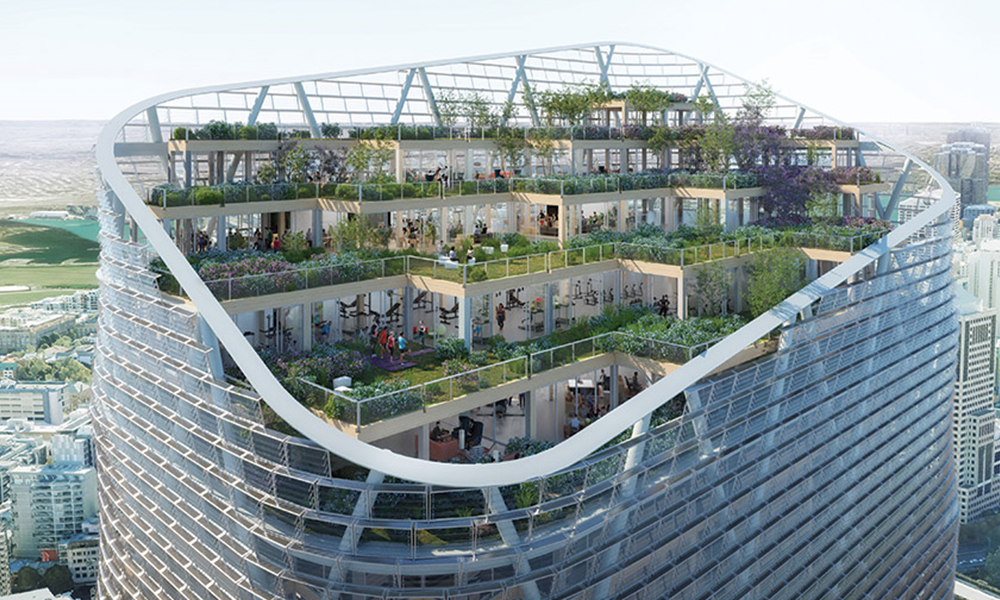
15 Sep ENR Top 100 Green Design Firms and Contractors: Green Market Growth Stunted

ENR Top 100 Green Design Firms and Contractors: Green Market Growth Stunted
Sustainable design and contracting revenue dips, while healthy building standards help projects turn over a new leaf
Emell D. Adolphus | Jonathan Keller
Engineering News-Record
September 15, 2021
On his first day in the Oval Office, President Biden signed an executive order recommitting the U.S. to the Paris Agreement. With new targets set to curb carbon emissions and build a greener, more resilient future, design firms and contractors are now tasked with helping owners reshape what it means to be green in the age of COVID-19.
Revenue numbers for this year’s Top 100 Green Design Firms and Contractors show signs of a market in transition. Total design revenue is $6.41 billion, a 12% drop from last year’s $7.28 billion. Contracting revenue is also down to $69.85 billion from $72.71 billion last year, a 3.9% drop.
Despite these dips, design firms and contractors say owners now more than ever want projects to incorporate green building standards, such as LEED, Envision and Parksmart, to reduce outside environmental footprints. Other standards, such as improving the health and well-being of building occupants, can add an additional shade of green to what is built.
“The pandemic has not fundamentally changed how our clients view sustainable buildings,” says Eric Sheffer, principal at Nashville-based SSR (Smith Seckman Reid). “But it has expanded emphasis on health, wellness and indoor environmental quality.”
Carbon Conditions
In the past year, green design firms and contractors report that building performance standards are being driven less by new technologies or products, and more by market pressure as public awareness grows of the magnitude and associated risk of the climate crisis. Increasingly, investors, supply chains and employees are all asking for evidence of immediate and impactful action toward carbon and climate-resiliency goals.
For some design firms, the same goals established for projects are being applied to their clients company-wide.
“The pairing of these two topics—resiliency and carbon-neutrality—is at the heart of our integrated learning right now,” says Maria Papiez, director of sustainable design at Ewing Cole. “We are maintaining our existing efforts to deeply reduce operational energy use and GHG emissions (CO emissions from fossil fuel combustion and industrial processes) while also targeting reductions in the GHG emissions associated with the embodied carbon of materials.”
Resilient design strategies can sometimes connect to and impact operational and embodied carbon emissions in opposing ways, Papiez explains. For example, one aspect of reducing embodied carbon is limiting the quantity of material used in buildings through leaner design and elimination of redundant or unnecessary products. At the same time, resilient design might suggest additional systems or materials to mitigate disruption due to future climate change.
“Each project presents opportunities to evaluate the best balance among these variables specific to the project typology and location,” says Papiez.
For example, the primary climate-dependent energy performance drivers are envelope and ventilation. By improving an envelope’s thermal performance and including energy recovery on ventilation air streams, designers can mitigate the effects of an uncertain future climate (resiliency) while simultaneously improving building energy performance (operational energy emissions).
Additionally, recent building codes and standards addressing decarbonization have seen a significant increase in ESG reporting and tracking, driven by the financial industry, explains Rachel Bannon-Godfrey, senior principal and global sustainability leader for Stantec’s buildings practice. Responding to the market signals sent by investor groups might result in faster progress within the building industry than it has achieved by itself so far, she says.
The economic impacts of the pandemic put a pause on many projects, large and small. At the same time, “the topics of electrification and embodied carbon saw a massive spike in interest,” says Bannon-Godfrey. This opened the door to more significant discussions about reuse instead of new construction, proposals for climate action planning and climate risk assessment. And as the market appetite for net-zero, carbon-neutral and resilient buildings grow, so does the need for standardization of the definitions and calculation methodologies to ensure accountability and meaningful action, she says.
“Every design path, every design decision made by every member on a project team, should lead to avoiding greenhouse gas emissions and supporting environmental justice,” says Bannon-Godfrey. Because rating systems have become a recognizable indicator of achievement within the building industry, “every rating system should double down on their targets and thresholds for operational and embodied carbon to make sure every project meets the Architecture 2030 Challenge, and what the IPCC is telling us we need to do today,” she says.


